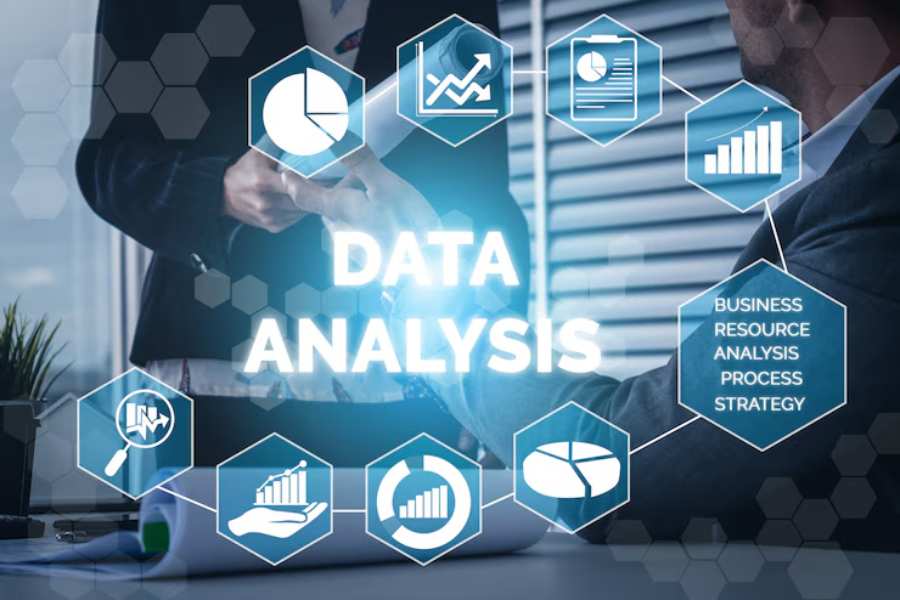If you’ve ever wondered what is machine learning in data analytics, you’re not alone—and you’re asking the right question at the right time. As industries across the globe drown in data, the ability to interpret that data quickly and intelligently has become a competitive edge. That’s where machine learning steps in, turning raw information into smart predictions and actionable strategies.
Machine learning isn’t just a supporting tool; it’s becoming the backbone of modern analytics. By integrating machine learning into data analytics, organizations can automate decision-making, detect patterns faster than any human could, and adapt to new information in real time. This isn’t science fiction—it’s already powering innovations in healthcare diagnostics, financial forecasting, and personalized marketing.
So why is this synergy so powerful? How does it work beneath the surface? And what makes it vital for businesses looking to thrive in a data-saturated world? In this guide, we’ll unpack exactly what machine learning is in data analytics, using real examples and insights to show how it’s changing the game across every industry.
What is machine learning in data analytics?
It refers to using machine learning algorithms to automate, enhance, and scale the process of analyzing data, helping businesses identify patterns, trends, and predictions with minimal human intervention.
The Role of Scalability in Machine Learning and Big Data Analytics
Machine learning in data analytics uses intelligent algorithms that learn from data to make predictions and drive decisions without being explicitly programmed. Unlike traditional analytics, which relies on static methods and historical observations, this approach uncovers complex, hidden patterns in large datasets and adapts as new information flows in.
This evolution transforms the entire data analysis process. Instead of generating standard reports or relying on manual insights, machine learning enables systems to detect trends, forecast outcomes, flag anomalies automatically, and even recommend strategic actions. For example, in customer retention, traditional methods might reveal who left. In contrast, machine learning in data analytics can explain why they left and who’s likely to leave next, enabling timely and targeted interventions.
Scalability is a critical advantage here. As data volumes grow exponentially, manual analysis quickly becomes unsustainable. Machine learning thrives in these environments, delivering real-time insights across finance, healthcare, and marketing industries. Even tools outside traditional analytics, like a Website Design Cost Calculator—benefit from machine learning, as algorithms can adjust pricing estimates based on user input trends and historical cost data.
While effective implementation requires clean data and consistent oversight, the rewards are immense. Machine learning shifts data analytics from reactive to proactive, enabling smarter, faster, and more scalable decisions in a data-dominated world.
How Does Machine Learning Enhance Data Analytics?
Machine learning significantly elevates the power of data analytics by introducing automation, intelligence, and adaptability into the process. Its ability to streamline operations and derive meaningful insights from massive datasets makes it a game-changer for businesses across all sectors.
Automated Data Processing
One primary way machine learning enhances analytics is through automation. Instead of relying on manual processes, algorithms can clean, categorize, and structure data with minimal human input. Over time, these systems learn from historical operations, improving their speed and accuracy and freeing up analysts to focus on higher-level strategic tasks.
Pattern Recognition and Hidden Insights
Machine learning excels at identifying patterns that may go unnoticed by traditional methods. Whether it’s analyzing customer behavior, sales trends, or supply chain performance, these models dig deeper into datasets to uncover valuable insights. This leads to smarter decisions and better forecasting accuracy.
Predictive Power in Business Planning
Another significant advantage is the predictive modeling capability. Machine learning allows companies to anticipate outcomes, such as future buying behaviors, demand fluctuations, or financial risks, with greater precision. These forecasts are essential for proactive planning and competitive positioning.
Real-Time Analytics and Decision-Making
Machine learning also empowers real-time data analysis. Businesses can now access up-to-the-minute dashboards that continuously process new data, enabling immediate responses to market changes or operational issues.
Enhanced Anomaly Detection
Lastly, machine learning strengthens anomaly detection. It identifies unusual patterns, such as fraudulent transactions or system malfunctions, almost instantly, making it vital for security, compliance, and operational stability.
Top Real-World Applications of Machine Learning in Data Analytics
Machine learning revolutionizes how industries analyze data, solve problems, and drive decision-making. Its ability to process large datasets, uncover patterns, and adapt over time makes it a valuable tool across countless sectors. Below are some of the most impactful applications of machine learning in data analytics:
- Healthcare: Machine learning predicts disease outbreaks, analyzes medical imaging for diagnostics, and identifies patients at high risk for complications. These insights support preventive care and faster, more accurate treatments.
- Retail: Businesses use machine learning to deliver personalized shopping experiences, manage stock efficiently, and forecast future sales trends. It helps retailers boost customer satisfaction while reducing inventory waste.
- Finance: In the financial sector, machine learning powers credit scoring models, detects fraudulent activities, and enables real-time algorithmic trading. These applications improve risk management and enhance operational security.
- Marketing: Companies rely on machine learning for campaign optimization, sentiment analysis, and detailed customer segmentation. This allows for more targeted messaging and increased conversion rates.
- Manufacturing: Predictive maintenance, defect detection, and supply chain optimization are just a few ways manufacturers benefit from intelligent data analytics powered by machine learning.
- Education: Educational institutions use adaptive learning platforms, predictive models to monitor student performance, and data-driven resource allocation strategies.
Why Is Machine Learning in Data Analytics a Game Changer?
Machine learning redefines how data analytics approaches are made, making it far more powerful, scalable, and adaptable than traditional methods. Here’s why it’s considered a true game changer in the analytics world:
- Scalability That Grows With Your Data: Traditional analytics tools often struggle with large volumes of data. Machine learning models, however, excel in high-data environments. They improve with exposure to more data, making them ideally suited for enterprises managing vast and constantly growing datasets.
- Higher Accuracy and Reduced Human Error: As machine learning algorithms analyze more data, they uncover intricate patterns that are often too complex for manual analysis. This leads to more accurate predictions, better business insights, and fewer errors, especially in critical sectors like healthcare and finance.
- Significant Time and Cost Savings: Machine learning automates repetitive tasks such as data classification, cleaning, and analysis. This accelerates the entire analytics process and frees up data professionals to focus on higher-level strategy and innovation.
- Flexibility and Adaptability Over Time: Machine learning systems continuously learn and evolve, unlike static models. They adapt to new trends, data inputs, and business needs without complete reprogramming, ensuring relevance in dynamic environments.
Benefits of Integrating Machine Learning in Data Analytics
Integrating machine learning into data analytics unlocks powerful capabilities beyond traditional analysis. The benefits are wide-ranging and transformative, from smarter decisions to enhanced customer experiences.
Improved Decision-Making
Machine learning brings a new level of intelligence to decision-making processes. Analyzing historical and real-time data enables organizations to generate predictive and prescriptive insights. These insights help leaders make informed decisions faster and confidently, ultimately improving business outcomes.
Reduced Human Bias
One of machine learning’s most impactful advantages is its ability to minimize bias in data interpretation. Unlike human analysts, algorithms evaluate data without preconceived notions or subjective influence, resulting in more objective, fair, and data-driven conclusions.
Enhanced Customer Experience
Machine learning enables businesses to understand customer behavior on a deeper level. By analyzing user data, preferences, and interactions, organizations can create more personalized and engaging experiences, improving satisfaction and loyalty.
Operational Efficiency
Automation is a significant benefit of machine learning in analytics. It handles repetitive and time-consuming tasks like data classification or anomaly detection, allowing data teams to focus on innovation and strategy. This leads to more streamlined operations and increased productivity.
Sustainable Competitive Advantage
Organizations integrating machine learning into their analytics stack often gain a strategic edge. They are more agile, more accurate in forecasting, and faster to adapt to changes—factors that are critical for long-term success in today’s fast-paced market.
Final Thoughts
In an era where data shapes nearly every business decision, understanding what is machine learning in data analytics becomes a game-changing advantage. Machine learning takes analytics beyond traditional reporting by allowing systems to learn from data, identify evolving patterns, and deliver real-time, actionable insights. It transforms reactive strategies into proactive ones, empowering businesses to anticipate change and adapt swiftly. Whether improving customer experiences or streamlining complex workflows, machine learning drives innovation across every sector. For organizations aiming to stay relevant and competitive, integrating machine learning into their analytics isn’t just smart—it’s essential. The sooner companies harness this powerful synergy, the faster they unlock brighter, sharper, and more scalable decision-making.
FAQ’s
What is the difference between data analytics and machine learning?
Data analytics focuses on examining datasets to find trends and insights, while machine learning uses algorithms to predict future outcomes based on data.
Do I need programming knowledge to use machine learning in analytics?
Basic knowledge of Python or R helps, but many tools now offer user-friendly interfaces for non-programmers.
Is machine learning only for big companies?
No. Small and medium-sized businesses can leverage machine learning, especially with cloud-based platforms and affordable tools.
What industries benefit most from machine learning in analytics?
Healthcare, finance, retail, education, marketing, and manufacturing are among the top industries leveraging this technology.
Can machine learning models replace data analysts?
Not entirely. They augment human capabilities, allowing analysts to focus on strategic insights rather than repetitive tasks.







